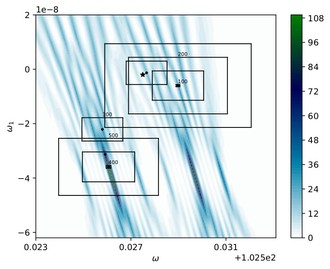
Gravitational waves astronomy is one of the youngest and dynamically progressing field in modern astronomy. Existence of gravitational waves was predicted by Einstein, more than hundred years ago, but was confirmed observationally only in 2015. Until then we could observe astrophysical bodies and events only by telescopes that register electromagnetic waves (like radio waves, gamma waves, X-rays etc), and neutrinos, hence a lot of fascinating phenomena, like the mergers of black holes, were practically invisible. So far, several signals from the compact objects coalescences were detected in LIGO and Virgo detectors. As the interferometers improve their sensitivity, we expect other, more subtle, types of signals to be registered. Among promising sources of gravitational waves are long-lived nearly periodic signals produced by rotating, asymmetric neutron stars. Depending on the astrophysical scenario, the sources of asymmetry may have thermal, viscous, elastic and/or magnetic origin.
Polgraw is the Polish contribution to LIGO-Virgo Collaboration (Polgraw group website: https://polgraw.camk.edu.pl), actively participating in the gravitational waves research, including the development of theoretical models, data analysis and detector characterisation. One of the main Polgraw task is searching for continuous gravitational waves from the rotating neutron stars, by using time-domain F-statistic method. Polgraw software was used in the analysis of the data from previous observational LIGO-Virgo runs (O1 run: Abbott et al., 2017, Phys. Rev. D, 96, 062002; Abbott et al., 2018, Phys. Rev. D 97, 102003 and O2 run: Abbott et al., arXiv:1903.01901). New observing season (O3) started at the beginning of April 2019 and is scheduled to last for one year. Comprehensive O3 data analysis will include searches of continuous gravitational waves signals from known (from electromagnetic observations) pulsars, as well as from unknown sources.
Recently time-domain F-statistic pipeline was extended by the so-called `Followup' procedure. The aim of the Followup procedure is to verify whether significant candidates for the continuous gravitational waves signals are of astrophysical interest and, if yes, to estimate parameters of the signal precisely. In our work (Sieniawska, Bejger, Królak, 2019, arxiv preprint: https://arxiv.org/abs/1905.13488) we introduced methodology of the Followup procedure, including Inverted Mesh Adaptive Direct Search algorithm - our modification of the standard Mesh Adaptive Direct Search algorithm, which makes optimisation procedure more suitable for the four-dimensional F -statistic case. We also present tests of the Followup procedure for the mock data: generated artificial signals added to the white, Gaussian noise. The tests show a good agreement with the theoretical predictions. The Followup will become part of the Time-Domain F-statistic pipeline that is routinely used for all-sky searches of LIGO and Virgo detector data.
Picture:






